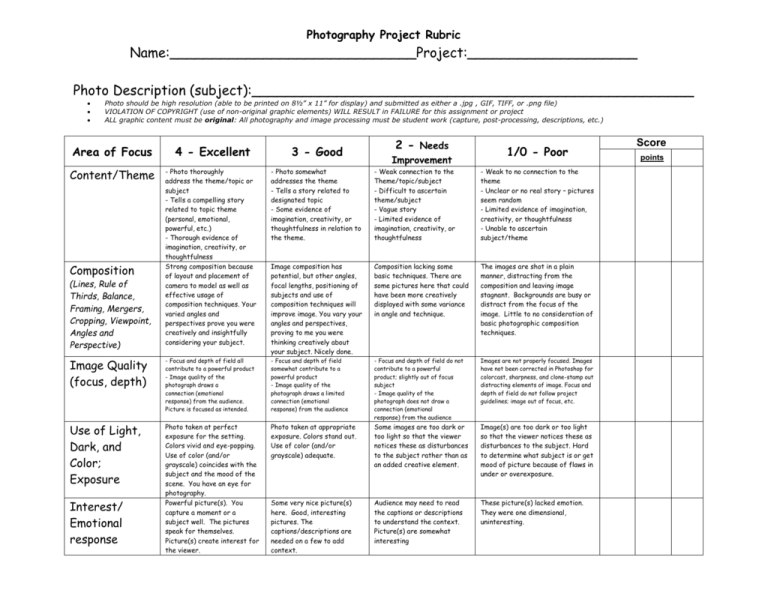

The way that this is carried out has been classified into four categories ( Sandeen, 2013). There have been attempts to address this issue, with MOOC platforms providing paid-for options to learners, in exchange for credit or recognition of learning. This is characterised by the fact that most learners on MOOCs tend to be older, well-educated and studying for interest (Liyanagunawardena, Lundqvist and Williams, 2015 Macleod et al., 2015). Without accreditation, the value of a MOOC is limited, irrespective of the prestige of the institution behind it.
#THROROUGHESS AS ELEMENT OF RUBRIC FREE#
This typical MOOC model then is problematic, in that the people who would benefit most from the free learning opportunity those who cannot afford or otherwise access traditional higher education, have no incentive to participate as they receive no formal acknowledgment of their learning. These methods are recognised as having limited rigour ( Daradoumis, Xhafa and Caballé, 2013), which may leave institutions reluctant to provide official accreditation of MOOC learning, as they could be risking their reputation for no financial gain ( McAuley et al., 2010). The large number of students on a course makes tutor intervention at an individual level impractical, if not impossible and therefore MOOCs employ a variety of computer-marked assessments and peer-review activities to assess students’ learning (Admiraal, Huisman and Pilli, 2015 Chauhan, 2014). Some argue that these factors have the benefit of opening up higher education to new markets, in particular to those who may not be able to afford a traditional university course ( Dillahunt, Wang and Teasley, 2014) but others believe it raises issues of quality and difficulty in assessing student learning ( Eaton, 2012 Kaplan and Haenlein, 2016 Macleod, Haywood and Woodgate, 2015). That is, they are usually free, intended to be taken by hundreds, if not thousands of students, and they have no admissions policy: they require no prior educational attainment, although they may strongly recommend it ( McAuley et al., 2010). MOOCs are by their very nature massive and open to all.

The paper makes recommendations for future developments and further research. Although the rubric was designed with the aim of evaluating MOOCs, it can be applied to any online learning experience that includes student engagement, either written or spoken.


The rubric identifies that the learners on this course are demonstrating elements of transformative learning at the lower levels of Mezirow’s seven stages of critical reflection. The rubric created for this research attempts to fill that gap, by providing a means to evaluate both student learning and learning design. The literature review finds that there is a gap in the research in evaluating for-credit MOOCs against the intended educational aims of the accrediting institution. Evaluation is in the form of a rubric which is designed using Mezirow’s theory of Transformative Learning as a theoretical framework, alongside the activity types used to inform design of FutureLearn courses. This study evaluates a two-week MOOC delivered on FutureLearn as part of an MSc in Nursing accredited by Coventry University to establish whether learners are demonstrating transformative learning.


 0 kommentar(er)
0 kommentar(er)
